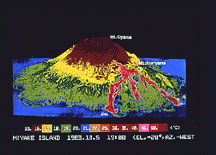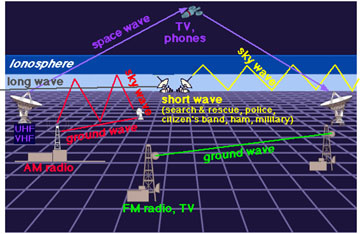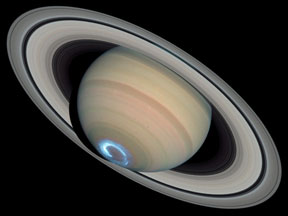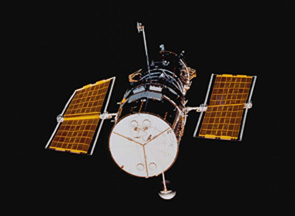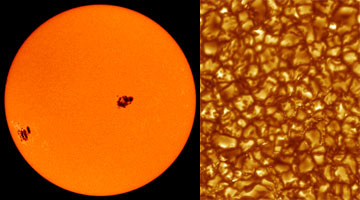Click on image for full size
Windows to the Universe original artwork.
Visible Light
Visible light is one way energy uses to get around. Light waves are the result of vibrations of electric and magnetic fields, and are thus a form of electromagnetic (EM) radiation. Visible light is just one of many types of EM radiation, and occupies a very small range of the overall electromagnetic spectrum. We can, however, directly sense light with our own eyes, thus elevating the role of this narrow window in the EM spectrum because of its significance to us.
Light waves have wavelengths between about 400 and 700 nanometers (4,000 and 7,000 ┼). Our eyes perceive different wavelengths of light as the rainbow hues of colors. Red light has relatively long waves, around 700 nm (10-9 meters) long. Blue and purple light have short waves, around 400 nm. Shorter waves vibrate at higher frequencies and have higher energies. Red light has a frequency around 430 terahertz, while blue's fequency is closer to 750 terahertz. Red photons carry about 1.8 electron volts (eV) of energy, while each blue photon transmits about 3.1 eV.
Visible light's neighbors on the EM spectrum are infrared radiation on the one side and ultraviolet radiation on the other. Infrared radiaiton has longer wavelength waves than red light, and thus oscillates at a lower frequency and carries less energy. Ultraviolet radiation has waves with shorter wavelengths than do blue or violet light, and thus oscillates more rapidly and carries more energy per photon than visible light does.
Light travels at the incredible speed of 299,792.458 kilometers per second (about 186,282.4 miles per second). At this amazing speed, light could circle Earth more than seven times in one second! The lowercase letter "c" is often used to represent the speed of light in equations, such as Einstein's famous relation between energy and matter: "E = mc2". All forms of electromagnetic waves, including X-rays and radio waves and all other frequencies across the EM spectrum, also travel at the speed of light. Light travels most rapidly in a vacuum, and moves slightly more slowly in materials like water or glass.







